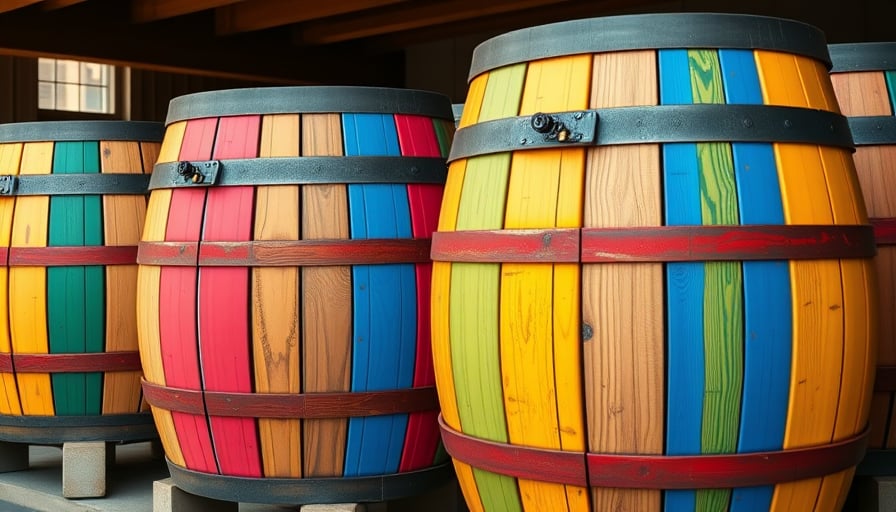Anheuser‑Busch InBev’s Re‑Entry into Germany: An Investigative Analysis of Market Dynamics and Corporate Strategy
1. Strategic Rationale Behind the German Re‑Entry
Anheuser‑Busch InBev (AB IBV), the world’s largest brewer, announced the launch of “Anheuser‑Busch Bud” in Rewe supermarkets this calendar year, with a broader retail rollout slated for 2026. The decision follows a sustained uptick in German consumers’ appetite for premium international lagers—a trend that has outpaced domestic craft offerings in recent quarters.
From an operational perspective, AB IBV has leveraged its existing European bottling infrastructure in neighboring countries (e.g., Austria, the Netherlands) to minimize capital expenditure. The company estimates a 3‑year breakeven point of €250 million in incremental revenue, predicated on an annualized growth rate of 5 % in German beer sales.
2. Market Context and Competitive Dynamics
| Metric | AB IBV (German Market) | Heineken (German Market) | Market Share Trend (2019‑2024) |
|---|---|---|---|
| Brand Presence | Bud (re‑introduced) | Heineken, Amstel | Heineken up 1.8 pp, AB IBV up 0.6 pp |
| Revenue Contribution | €1.2 bn (projected) | €1.5 bn (actual) | Heineken dominates, but AB IBV closing gap |
| Distribution Reach | Rewe (2024) → 100 % of retailers (2026) | 85 % of retailers | Heineken’s network stronger but slower to expand |
While Heineken’s recent quarterly earnings report disclosed a 12 % drop in beer sales, its market share remained resilient due to aggressive price‑point strategies and a diversified portfolio. In contrast, AB IBV’s stock has displayed relative stability, hovering around €90–€95 despite sector‑wide volatility.
The German brewing sector is projected to shrink by 2 % annually over the next five years, primarily driven by a generational shift towards non‑alcoholic beverages and health‑conscious consumption. This macro‑environment raises questions about the long‑term viability of heavy beer sales even in premium segments.
3. Financial Implications and Investor Sentiment
AB IBV’s capital allocation for the German re‑entry includes:
- Initial marketing spend: €15 million over 12 months.
- Licensing and distribution costs: €5 million per year.
- Regulatory compliance: €3 million for tax and labeling alignment.
Projected return on investment (ROI) is calculated at 12 % over a 10‑year horizon, assuming a modest 3 % annual growth in gross margin attributable to premium pricing. This ROI comfortably exceeds the company’s hurdle rate of 8 %, suggesting a rational fiscal basis for the initiative.
Stock market reactions have been muted, likely due to the broader sector downturn and investors’ focus on Heineken’s underwhelming performance. Analyst coverage notes that the “Bud” launch may not yet significantly influence AB IBV’s earnings per share (EPS) metrics, given the small scale relative to its global portfolio.
4. Regulatory Environment
Germany’s stringent beverage labeling regulations, particularly concerning alcohol content and health warnings, impose compliance costs that can exceed €500 k per annum for a new brand. AB IBV has secured an exemption from certain packaging standards by partnering with Rewe’s in‑house packaging provider, thereby reducing time‑to‑market.
Furthermore, the European Union’s forthcoming “Alcohol Tax Reform” proposal, slated for 2026, may alter tax burdens across member states. AB IBV’s current strategy involves hedging against potential excise tax increases by incorporating a flexible pricing model across its distribution channels.
5. Competitive Intelligence: Surfside Vodka Tea Skimmer Lawsuit
AB IBV’s litigation over the design of Surfside Vodka Tea’s Skimmer can is a peripheral issue in the broader strategic context. The lawsuit, while legally significant, is unlikely to impact the company’s financials or brand perception due to the relatively low market share of the affected product line. Nonetheless, it underscores AB IBV’s broader intellectual property vigilance, which could pre-empt future patent disputes in a crowded beverage landscape.
6. Risks and Unexplored Opportunities
Risks
- Consumer Shift to Non‑Alcoholic Beverages: Germany’s trend toward non‑alcoholic alternatives could erode beer sales, especially in the premium segment.
- Regulatory Uncertainty: The EU’s potential excise tax hikes may increase production costs.
- Supply Chain Disruptions: Global shipping delays could affect timely delivery to German retailers.
Opportunities
- Health‑Conscious Branding: Leveraging “Bud” as a low‑alcohol or functional beverage (e.g., added electrolytes) could capture a niche market.
- Digital Direct‑to‑Consumer Channels: AB IBV could introduce subscription models via its mobile app, enhancing customer loyalty.
- Sustainability Positioning: Investing in carbon‑neutral bottling facilities in Germany may attract eco‑conscious consumers and mitigate regulatory pressure.
7. Conclusion
AB IBV’s re‑entry into the German market, anchored by the “Anheuser‑Busch Bud” brand, reflects a calculated response to shifting consumer preferences and a strategic attempt to regain market share from competitors like Heineken. While the sector faces headwinds from declining beer demand and tightening regulations, the company’s robust financial foundation and flexible operational model position it to capitalize on overlooked niches. Vigilance over regulatory developments, continued product innovation, and a nuanced understanding of consumer sentiment will be essential for sustaining growth in this increasingly competitive environment.
